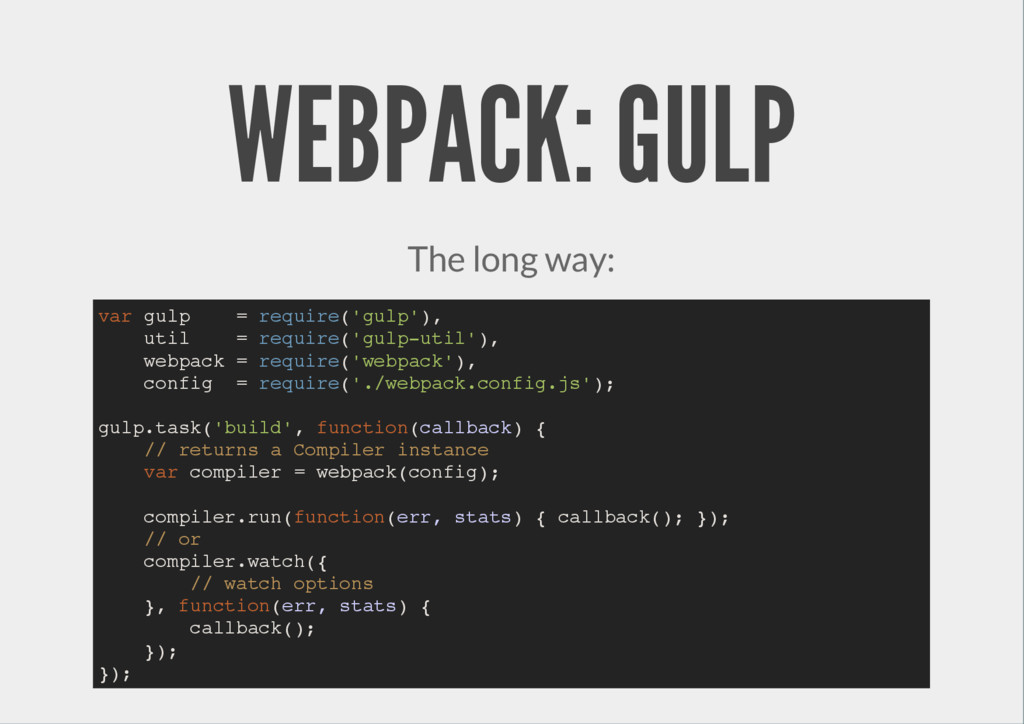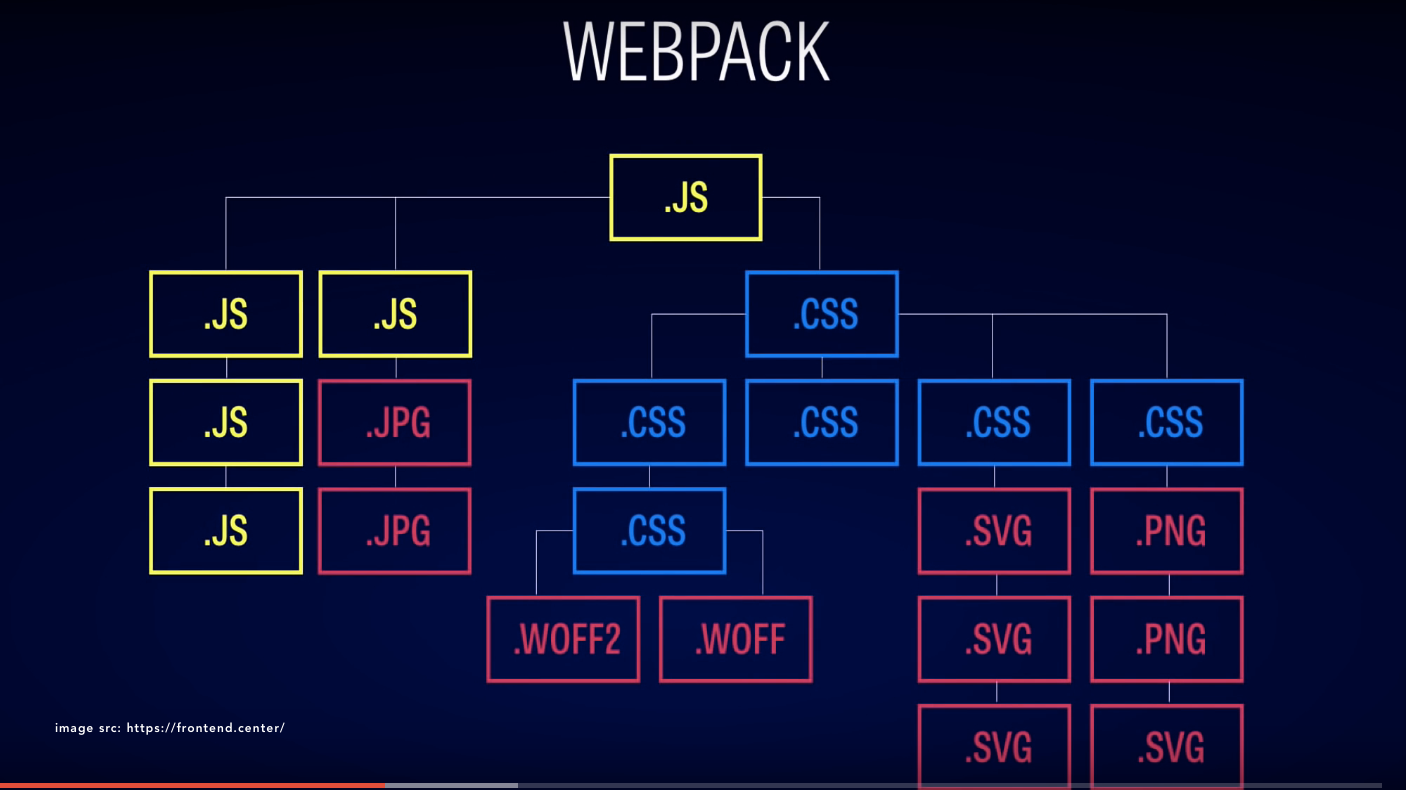

I dont use base 64 images, but the option is there if you wish them to be encoded.
#How to run webpack from gulp install
It is accomplished with the file loader, which is coincidentally installed when you install the url loader plugin. This is good for images that are less than 100kb. Our package.json should look like this for now. Note that WebPack can also turn your images into inline base 64 encoded assets. This allows you to customize webpack for your needs and distribute common plugins as open source. To run Webpack, we have to use npm script with simple command webpack and our configuration file as config option. I'll help you decide which approach makes sense for you. Most internal features are based on this plugin system. If you want to use Webpack's awesome hot module replacement (HMR) feature, there are exactly 3 ways to do it. Plugin system: webpack features a rich plugin system. It handles the most common module styles: CommonJs and AMD. It even allows expressions in dependencies like sorequire("./templates/" + name + ".jade"). Hence, it is good to used Webpack if there are many applications to be run though it must be noted about the presence of plugins and advanced features in the bundler. This webpack boilerplate is for beginner, intermediate, and advanced developers looking to create static websites quickly while acheiving all the right optimizations to score perfect on Google Page Speed Insights and Google Lighthouse Reports This is an evolution of tris-gulp-boilerplate, now with Webpack 4. By doing so, every resource forms a module.Ĭlever parsing: webpack has a clever parser that can process nearly every 3rd party library. Though Gulp can be made to do the tasks handled by Webpack, Gulp is not designed to do so, and hence the application may not work well. Loaders: webpack can only process JavaScript natively, but loaders are used to transform other resources into JavaScript. After the chunk tree is optimized, a file is emitted for each chunk.

We can do all this easily by using Bundler & Minifier Convert To Gulp option.Right-click on the bundleconfig.json file, choose Bundler & Minifier, and then choose Convert To Gulp option from the menu as shown below. Watch files for changes, re-run the builds, and reload the dev server. The first step to start using Gulp in your ASP.NET Core project is to install Gulp and related npm modules and create a Gulpfile.js. Async dependencies act as split points and form a new chunk. The develop command will be similar to the build command, but with a couple of extra steps: Build the Webpack assets. You can require ('webpack-stream') instead of webpack and optionally pass. In this case, it is unnecessary to install webpack separately as it is a direct dependency of webpack-stream: npm install -save-dev webpack-stream.
#How to run webpack from gulp code
The most pressing reason for developing another module bundler was Code Splitting and that static assets should fit seamlessly together through modularization.Ĭode Splitting: webpack has two types of dependencies in its dependency tree: sync and async. Gulp is also a fairly straightforward integration with the help of the webpack-stream package (a.k.a. Existing module bundlers are not well suited for big projects (big single page applications).


 0 kommentar(er)
0 kommentar(er)
